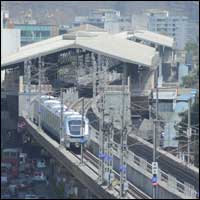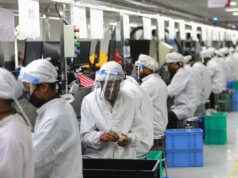The Indian pre-engineered steel buildings market is experiencing robust growth fuelled by infrastructure development and the increasing popularity of PEB systems in the industrial sector. Sectors such as automotive, power, logistics, pharmaceuticals, FMCG, and capital goods provide huge growth opportunity for PEB in India.
The Indian PEB market earned revenues of Rs.5,297 crore in 2012 and estimates this to reach Rs.13,612 crore in 2016, growing at a compound annual growth rate of 26.6 per cent, Frost & Sullivan noted in a new analysis.
The structural steel buildings market in India was around 5.0 to 5.5 million tonnes in 2011, of which around 9.5-10 per cent i.e. 537,176 tonnes accounted for the PEB market in India. It is expected that the market in terms of volumes will reach 900,000 tonnes by 2016, growing at a CAGR of 11.1 per cent.
Low penetration
Key challenges include increasing cost and shortage of skilled manpower, presence of alternative building structure (both steel and concrete) and fluctuating raw material (steel) prices which account for 55 to 60 per cent of the overall cost. This is expected to affect the price trend and impact the profit margin of the supplier in the long run as competition intensifies. These challenges would be directly attributed to the lower penetration of PEB in India.
“The PEB market is strongly associated with investment and growth in the industrial and commercial sectors. The new potential application areas for PEB in the next few years will include power plant structures, factory buildings, commercial buildings (offices and retail malls), warehouses, and metro stations,” a Frost & Sullivan’s Senior Research Analyst noted.
Promising sectors
The commercial building sector in India is estimated to reach a target of 20.44 billion sq. ft by 2030, from 7 billion sq. ft in 2010. It is expected that nearly 34 per cent of 2030 target had already been constructed and about 66 per cent of the building stock is yet to be constructed.
With manufacturing activity increasing in the last few years, logistics has gained equal importance in order to provide better goods at lesser cost. It is also observed that India has around 7,500 cold storage facilities with a capacity of 35 million tonnes. The addition in capacity to the cold store and warehousing would also trigger the PEB market in India.
With the onset and speedy progress of the metro rail system in the next 10 years, the scope of PEB is immense. Increase in technical competence plays a crucial role, and many market participants have introduced high-grade steel conforming to ASTM Grade 50 steel (lightweight and recyclable) without compromising on the product quality, which attracted many customers to pay high prices for quality jobs.
The heightened emphasis on green building construction is also poised to push market expansion. For instance, to increase energy efficiency, many PEB manufacturers have developed high efficiency windows and insulation for roofs, walls, ceilings and floors. The use of skylights and solar panels on rooftops will meet daylight and captive power requirements, while, at the same time, reducing emissions and gaining carbon credits under clean development mechanism.
Many leading international and domestic market participants are increasingly scouting for opportunities by adopting multiple business strategies such as venturing into engineering design, project contracting, manufacturing heavy structural steel buildings, and focusing on vertical integration whereas, merger and acquisition strategy will support them to grow inorganically and enable them to broaden their geographic reach and product portfolios.
Conclusion
The Government of India has set a massive target for developing infrastructure in the ongoing 12th Five-Year Plan (2012-2017) estimated at Rs.40,900,000, of which nearly 33-34 per cent has been allocated for the power sector with an additional target of 90,000 MW. Currently, the thermal power capacity stands at 140,976 MW. However, with the proposed capacity addition of 50,000 MW during the 12th Plan, it will provide huge growth opportunity for PEB in this sector.
In spite of the setback experienced in recent years, the PEB industry is hopeful of the future. That is mainly because of the housing statistics which point to acute shortage of houses in both rural and urban India. According to the 2011 Census, over 65 million people live in slums, up from 52 million in 2001. According to another estimate, there is a shortage of 18.78 million houses in the country. The National Urban Housing & Habitat Policy 2007 intends to promote sustainable development of habitat with a view to ensuring equitable supply of land, shelter and services at affordable prices to all sections of society.
PEB structures can play an important role in achieving this objective because of its inherent advantages. Pre-engineered structures can be executed much faster than structures built using conventional methods without compromising quality. Many political parties have promised houses for the homeless in their manifestos and the PEB industry may have to play an important role if these parties start implementing their promises once (and if) they get elected.











